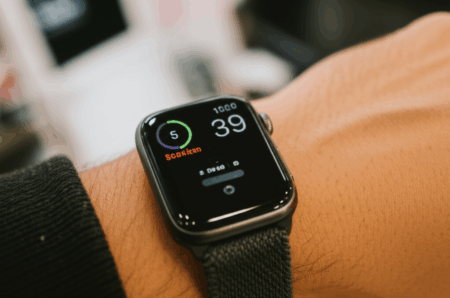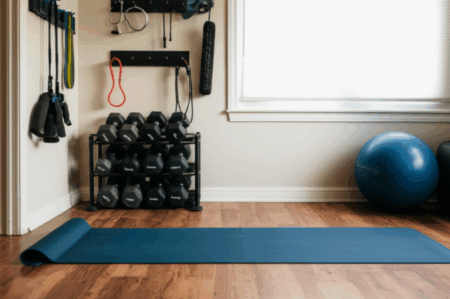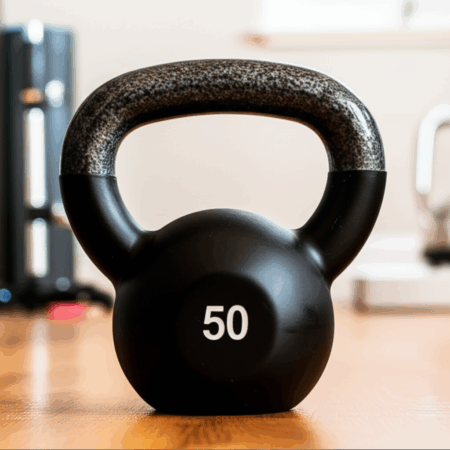Wearable technology has exploded in popularity, with fitness trackers and smartwatches becoming ubiquitous tools for monitoring our health and activity levels. From counting steps to tracking heart rate, these devices provide a wealth of data that many of us use to make informed decisions about our well-being. But how accurate are these wearables, and can we truly rely on the information they provide? Let’s dive into the studies and research surrounding the accuracy of wearable tech’s fitness tracking capabilities.
The Rise of Wearable Fitness Trackers
Just a decade ago, less than 10% of the population owned a wearable device like an Apple Watch, Fitbit, or Garmin. Today, nearly two-thirds of people use these devices daily. This surge in popularity reflects a growing interest in personal health management and the appeal of quantifying various aspects of our lives. As we collect unprecedented amounts of biometric data, it’s natural to wonder: How much of this data can we actually trust?
What Metrics Do Fitness Trackers Measure?
Fitness trackers typically measure a range of metrics, including:
- Step Count: Tracks the number of steps taken throughout the day.
- Heart Rate: Monitors heartbeats per minute, both at rest and during exercise.
- Energy Expenditure (Calories Burned): Estimates the number of calories burned based on activity levels and personal data.
- Sleep Tracking: Measures sleep duration, sleep stages (e.g., deep sleep, REM sleep), and sleep quality.
- Activity Intensity: Evaluates the intensity of physical activities.
- Blood Oxygen Saturation (SpO2): Measures the percentage of oxygen in the blood.
- Heart Rate Variability (HRV): Measures the variation in time intervals between heartbeats.
- Aerobic Capacity (VO2max): Estimates the maximum amount of oxygen the body can use during exercise.
Overall Accuracy: A Mixed Bag
Research indicates that the accuracy of fitness trackers varies depending on the metric being measured and the device being used. A recent analysis of scientific literature revealed that commonly used fitness trackers are, on average, 67.40% accurate across metrics like heart rate, step count, and energy expenditure. This suggests that while some wearables may be highly accurate for specific measurements, users should interpret the data with caution.
Heart Rate Monitoring: Generally Reliable
Many studies have found that wearable devices are relatively accurate in measuring heart rate. A Stanford University study showed that six out of seven wristband activity monitors measured heart rate with an error rate of less than 5%. Similarly, a WellnessPulse analysis indicated that fitness trackers offer a strong accuracy of 76.35% for measuring heart rate.
However, it’s important to note that accuracy can be influenced by factors such as skin tone, exercise intensity, and the type of activity being undertaken. Some devices, like the Apple Watch, have shown particularly high accuracy in heart rate monitoring, with one study reporting an accuracy of 86.31%.
How They Measure Heart Rate
Most wrist-worn devices use a process called photoplethysmography (PPG) to measure heart rate. This involves shining a light onto the skin and measuring the light reflected by the blood flow. Some newer devices use single-lead electrocardiograms (ECG) to assess the heart’s electrical activity. While these methods can provide a good estimate, they are not always exact and can be affected by hand, arm, and wrist movements.
Step Count: Moderate Accuracy
Fitness trackers generally demonstrate moderate accuracy in counting steps. A review of studies by JMIR mHealth and UHealth found that Fitbit, Apple Watch, and Samsung devices appeared to measure steps accurately in laboratory settings. However, real-world accuracy can vary.
A systematic review in the journal Sports Medicine noted that wearables demonstrated moderate accuracy for counting steps but were less capable when it came to accurately evaluating energy expenditure and activity intensity. Some devices tend to underestimate steps on treadmills while overestimating them in real-life scenarios. Garmin is often cited as one of the most accurate brands for step tracking.
Energy Expenditure: The Least Accurate Metric
One of the most significant challenges for wearable devices is accurately measuring energy expenditure, or calories burned. Studies consistently show that fitness trackers struggle with this metric. The Stanford University study mentioned earlier found that none of the seven devices tested measured energy expenditure accurately. The most accurate device was off by an average of 27%, while the least accurate was off by 93%.
The Sports Medicine review also found larger discrepancies for energy expenditure, with error margins ranging from -21.27% to 14.76%, depending on the device and activity. This is because estimating calorie burn is complex and depends on various factors, including an individual’s fitness level, height, weight, and body composition.
How They Estimate Calorie Burn
Fitness trackers estimate calorie burn based on a combination of data, including:
- Accelerometer Measurements: Detect movement and activity levels.
- Basal Metabolic Rate (BMR): Calculated using algorithms and personal data like age, sex, height, and weight.
However, these algorithms often make assumptions that don’t fit individuals very well, leading to inaccurate estimations. Experts caution against relying too heavily on calorie burn data from fitness trackers for making dietary decisions.
Sleep Tracking: Overestimations Are Common
Wearable devices often overestimate total sleep time and sleep efficiency when compared to polysomnography, the gold standard for sleep measurement. The Sports Medicine review found that wearables tend to overestimate total sleep time by more than 10% and underestimate sleep onset latency (the time it takes to fall asleep) and wakefulness after sleep onset. Errors in sleep tracking can range from 12% to 180% compared to polysomnography. Despite these inaccuracies, fitness trackers can still provide valuable insights into sleep patterns and trends.
Factors Influencing Accuracy
Several factors can influence the accuracy of wearable fitness trackers:
- Device Type and Brand: Different devices use various algorithms and sensors, leading to variations in accuracy.
- Sensor Type: The type of sensor technology used, such as photoplethysmography (PPG) sensors for heart rate or accelerometers for step counting, can impact accuracy.
- Algorithm Used: Manufacturers often keep their algorithms proprietary, making it difficult to compare devices objectively.
- Placement of the Device: The location of the device on the body (e.g., wrist, hip, ankle) can affect accuracy. For example, wrist-worn accelerometers may be more accurate than hip-worn sensors.
- User Characteristics: Factors like skin tone, body mass index (BMI), and fitness level can influence measurements.
- Activity Type and Intensity: The accuracy of measurements can vary depending on the type and intensity of physical activity.
- Manual Entries: The accuracy of data also depends on the information that users manually enter into the device, such as food consumption or activities performed.
- Movement and Ambient Conditions: Hand, arm, and wrist movements can interfere with heart rate measurements.
Which Brands Are the Most Accurate?
While overall accuracy varies, some brands consistently perform better than others in specific areas. According to a WellnessPulse analysis:
- Apple Watch: Generally provides the highest level of accuracy, particularly for heart rate monitoring.
- Garmin: Most accurate for tracking step count.
- Fitbit: The most researched wearable brand, with strong accuracy in heart rate monitoring and step counting.
However, it’s important to consider that the accuracy of a specific device can vary depending on the model and the metric being measured.
The Ever-Evolving Technology
The rapid pace of technological advancements in wearable tech means that accuracy is a moving target. As new devices and algorithms are developed, the potential for more accurate measurements increases. However, it also means that research findings can quickly become outdated.
A review in Sports Medicine emphasized that due to the time spans involved in research and publishing, study results are often relevant only to the last generation of wearable devices. In fact, less than 5% of consumer wearables released to date have been validated for all the biometric outcomes they measure.
To address this issue, some researchers are advocating for “living reviews” that are updated regularly to reflect the latest advancements in wearable technology.
How to Improve Accuracy
While the accuracy of wearable fitness trackers isn’t perfect, there are steps you can take to improve the reliability of the data:
- Wear the Device Properly: Ensure the device fits snugly on your wrist to improve sensor readings.
- Input Accurate Data: Provide accurate personal information, such as age, sex, height, and weight, to improve the accuracy of calorie burn estimations.
- Calibrate the Device: Some devices allow for calibration, which can improve accuracy.
- Be Aware of Limitations: Understand the limitations of the device and the metrics it measures. Don’t rely solely on the data for making critical health decisions.
- Compare Data Over Time: Focus on trends and patterns in your data rather than individual measurements.
- Use Multiple Data Points: Combine data from your wearable device with other sources of information, such as your own observations and feedback from your body.
- Consult with Healthcare Professionals: Discuss the data from your wearable device with your doctor or other healthcare provider to get a more comprehensive understanding of your health.
The Bottom Line: Use with Caution
Wearable fitness trackers can be valuable tools for monitoring your health and activity levels, but it’s important to approach the data they provide with a healthy dose of skepticism. While these devices can accurately measure certain metrics like heart rate and step count, they are less reliable for others, such as energy expenditure and sleep tracking.
Ultimately, the best approach is to use wearable fitness trackers as one piece of the puzzle, combining their data with your own observations, feedback from your body, and guidance from healthcare professionals to make informed decisions about your health and well-being. Instead of fixating on specific numbers, focus on incorporating regular physical activity into your lifestyle and listening to your body’s needs.







